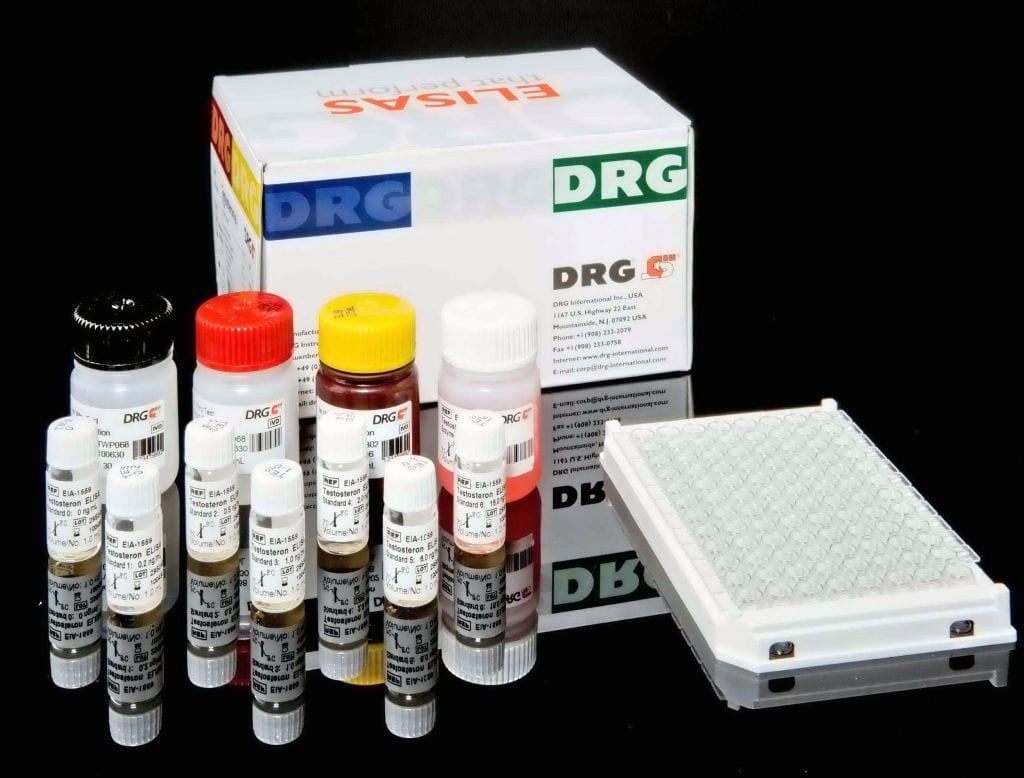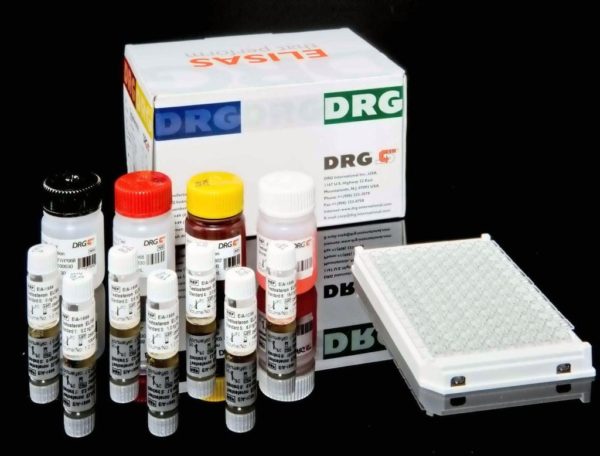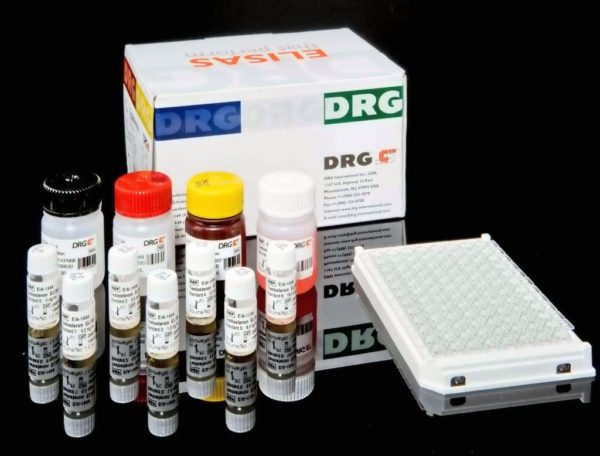Description
Neopterin (6-[1Ô2Ô3Ô-D-erythro-trihydroxy]PROPYLPTERIN) is a pyrazinopyrimidine compound derived from guanosine triphosphate (GTP). It represents an intermediate product in the synthetic pathway of biopterin. Biopterin is an essential co-factor in neurotransmitter synthesis. [1,2,3] Tetrahydorbiopterin is the co-factor of the enzymatic hydroxylation of phenylalanine, tyrosine and tryptophan. Tetrahydrobiopterin has also been identified as a co-stimulator of lymphocyte activation. Neopterin, similar to other pterins, occurs in plants, animals and humans.
The Neopterin ELISA employs an enzyme immunoassay technique to quantitate neopterin in a serum sample. Enzyme Immunoassays depend on the ability of a specific antibody to bind its corresponding antigen. To quantitate the antigen, the enzyme-conjugate (labeled) and native (unlabeled) form of the antigen compete for the limited number of binding sites on its specific antibody. As more unlabeled antigen is added to the reaction, it takes up more antibody binding
sites allowing less enzyme-labeled antigen to the bound. This proceeds until equilibrium between the free and antibody-bound antigen occurs. In the Neopterin ELISA, the sample and enzyme-conjugate are added to an antibody-coated assay well and incubated at room temperature for two hours. Following a wash step to remove all unbound labeled and unlabeled neopterin, substrate (TMB) is added and color development is allowed to proceed for thirty minutes. The enzyme reaction is then rapidly terminated with the addition of stopping solution and the absorbance is read at 450 nm. The resulting absorbance is inversely proportional to the amount of neopterin in the standard and sample.




